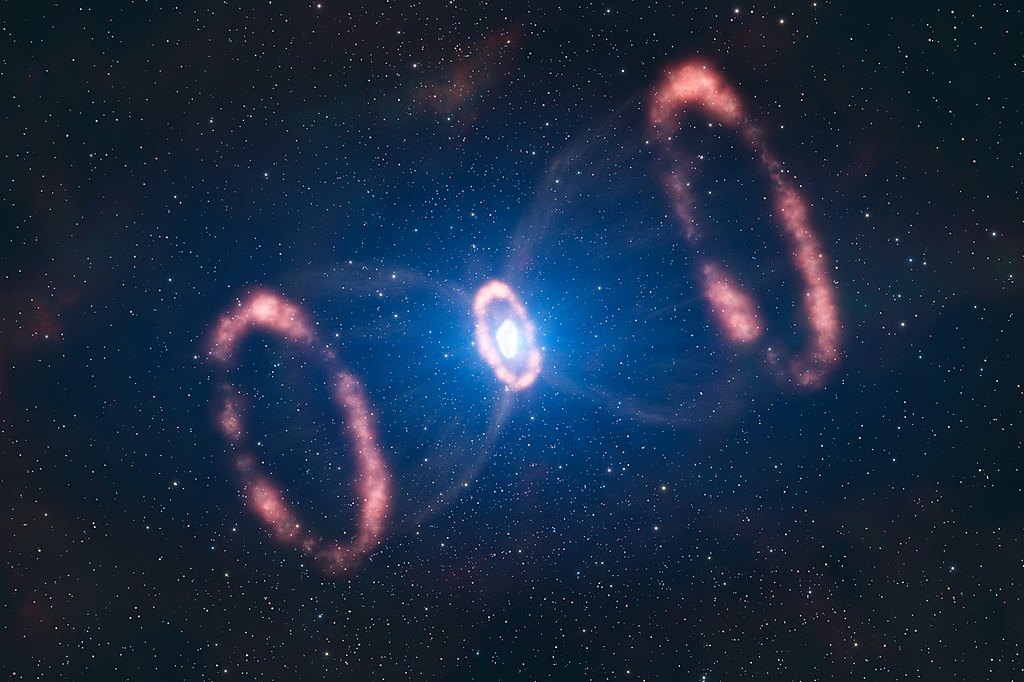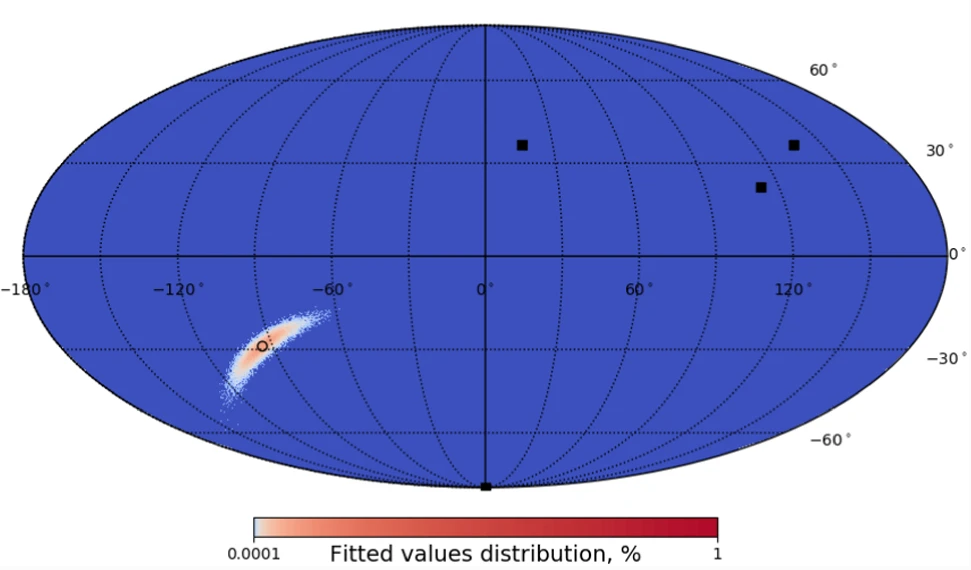Observing supernovae: neutrino detectors to the rescue
The next step in our LabEx UnivEarthS science retrospective leads us to know more about the essential role of current and future neutrino detectors for the multi-messenger observation of core-collapse supernovae. A result obtained, among others, by APC researchers.

Core-collapse supernovae are highly energetic explosions produced during the collapse of a massive star (with a mass exceeding 10 solar masses). They are among the most violent and luminous phenomena in our sky. Although observations of supernovae date back to (at least) antiquity, and the first models describing these objects emerged in the 1970s, this phenomenon is still poorly understood, and is therefore an important subject of study in contemporary astrophysics. Thus, the direct observation of supernovae by modern instruments represents a considerable challenge … but also a major one. Indeed, it is estimated that these core-collapse supernovae occur only once or twice a century in our galaxy.
In order to ensure that we do not miss the next occurrence of such a phenomenon, multi-messenger astronomy is proving to be an invaluable method. As demonstrated in 2017 with the multi-messenger detection of the binary neutron star merger GW170817, the combination of various signals emitted by an astrophysical source, including gravitational waves, electromagnetic radiation and neutrinos, can reveal the mechanisms behind violent astrophysical events… including core-collapse supernovae.
Indeed, this type of supernova has the particularity of releasing about 99% of its energy in the form of a huge flux of low-energy neutrinos. Neutrinos that happen to leave the stellar core several hours before photons. Consequently, the observation of this neutrino flux would allow the rapid and precise reconstruction of its direction of origin before the arrival of the corresponding electromagnetic signal. It would then be possible to point optical telescopes at the correct region of the sky to ensure the detection of the light emitted by the supernova.
One method used to reconstruct the direction of a signal is triangulation. This requires the use of different detectors, in order to measure the differences in the arrival time of the same signal between the different instruments. In the case of a stream of neutrinos emitted by a supernova, the temporal resolution of this arrival time is measured in milliseconds. Excellent coordination between the different neutrino observatories is therefore absolutely necessary. But are the capabilities of neutrino telescopes (current or under construction) sufficient to determine the origin of a core-collapse supernova by detecting its neutrino flux?
This is the question that a team of astrophysicists, including two APC researchers, wanted to answer. To do this, they focused on the IceCube, Hyper-Kamiokande, JUNO and KM3NeT/ARCA neutrino detectors, whose behaviour they simulated numerically. These simulated detectors were then confronted with a theoretical neutrino flux, constructed from a simplified supernova model.

Using different numerical methods, the researchers estimated that the neutrino detectors under consideration will be able to collect enough neutrinos from a core-collapse supernova with sufficient temporal resolution to deduce its direction of origin. Thus, for a given theoretical supernova, the combination of IceCube, Hyper-Kamiokande, JUNO and KM3NeT/ARCA provides with 90% certainty a region of the sky from which the signal would have originated measuring 140 deg2. This is comparable to the area obtained when triangulating a gravitational wave signal with the LIGO-VIRGO detectors (for comparison, the observable size of the Big Dipper is 1280 deg2, while that of the Sun is only 0.2 deg2).
This is still a large area of the sky to observe quickly to find the corresponding optical signal, but it can be optimized by comparing it with catalogues of known stars that may potentially collapse into supernovas or by efficiently organizing follow-up observations with robotic telescopes.
These analysis methods, tested here by numerical simulation, will eventually be integrated into the SNEWS (SuperNova Early Warning System), which would allow the entire scientific community to be quickly informed when the next supernova in our galaxy will occur. All that remains is to be patient.
Références :
Coleiro, A., M. Colomer Molla, D. Dornic, M. Lincetto, et V. Kulikovskiy. “Combining Neutrino Experimental Light-Curves for Pointing to the next Galactic Core-Collapse Supernova”. The European Physical Journal C 80, no 9 (September 2020): 856. https://doi.org/10.1140/epjc/s10052-020-8407-7
The LabEx UnivEarthS contributed to this research by funding the LEAK (E10) Exploratory project.
- 4.5 billions years ago, the Earth’s early atmosphere was similar to present Venus [1/10]
- Observing supernovae: neutrino detectors to the rescue [2/10]
- At the origins of the Solar System, millimetre-sized crystals at the heart of certain meteorites [3/10]
- Kinetic Inductance Detectors, a promising technology for precision astronomy [4/10]
- Light-speed seismology to prevent earthquakes [5/10]
- ATHENA, a technical challenge for the new generation of X-ray telescope [6/10]
- Dune fields, a key to understanding the climate of other “Earths” in the Solar System [7/10]
- SVOM/ECLAIRs space instrument will pave the way to a deeper understanding of ultra-long gamma-ray bursts [8/10]
- InSight/SEIS probes further into the heart of Mars [9/10]
- The search for dark matter compatible with the search for supernovae [10/10]
